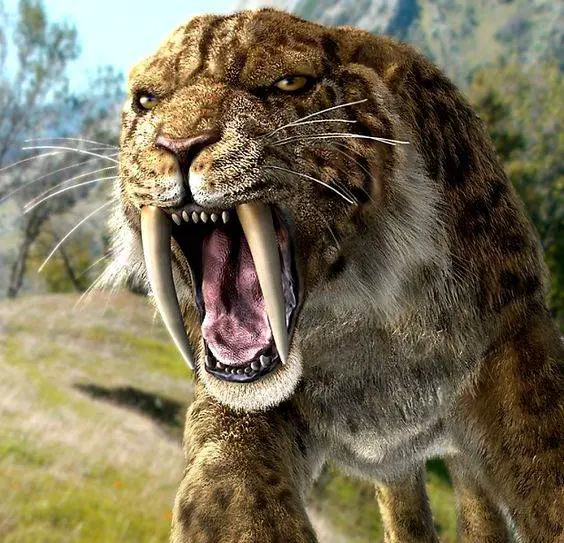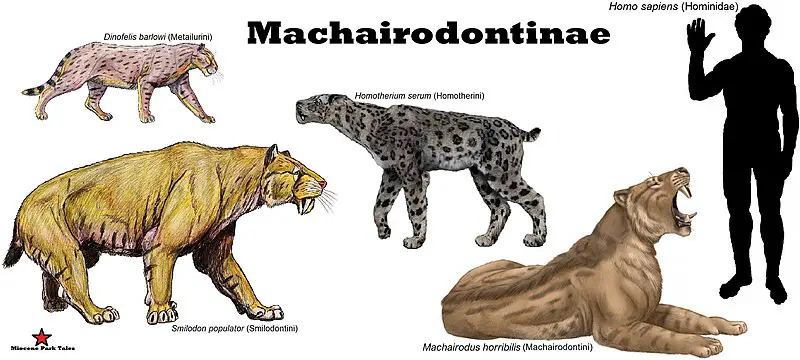Saber-tooth tigers were powerful predators that roamed in the Americas during the Ice Age, about 2.5 million years to 10,000 years ago. They belonged to a group of prehistoric cats, Smilodon or saber-toothed cats. They are commonly known as saber tooth tigers but they are actually not tigers and were not closely related to present-day tigers or other big cats. Their most distinctive feature was their long, curved canine teeth that resembled sabers or daggers, giving them their name. They may hunt large animals with the help of these specialized teeth. Here, we gathered information about the structure of saber tooth tigers’ teeth and jaw, how their saber teeth aided in hunting, why saber tooth tigers’ teeth were so long, and some interesting facts about the teeth of saber-toothed tigers.
Saber Tooth Tiger Teeth Facts
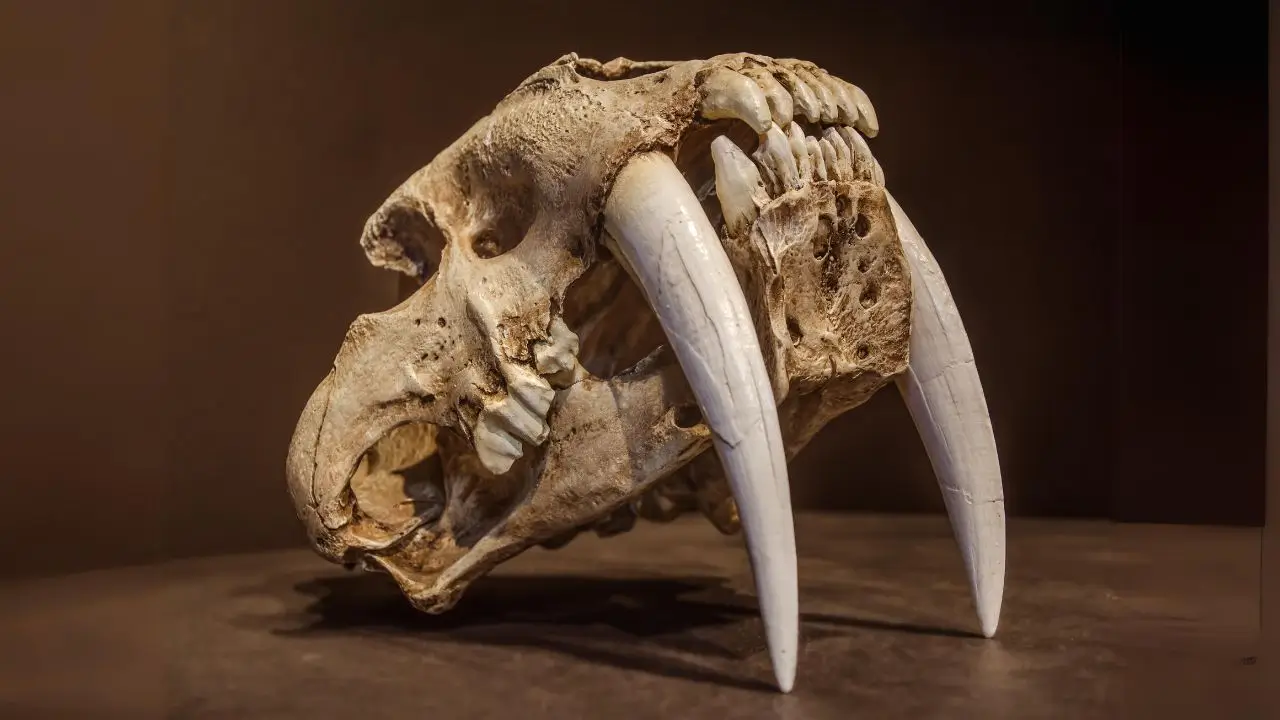
Teeth Structure
Incisors
Unlike the modern big cats that have flatter incisors set in a straight row, the incisors of saber tooth tigers were conical and arranged in a curved row. Incisors were used for holding and stabilizing prey while the bite was delivered with the canines.
Canines
The canine teeth of saber-tooth tigers were long, blade-like, and a little curved backward. Both edges of their canines were serrated. Unlike the rounded canines of modern big cats, their canines were flattened.
The average length of their canines was 14 cm (7 inches) and could reach a maximum of 28 cm (11 inches). Data reveals that the average growth rate of their canines was approximately seven millimeters per month. The duration for the complete growth of canines was about 18 months. The canines of saber tooth tigers were very fragile and must have been used with care to avoid any damage.
They had an enlarged contact surface between the crown of the canine and the gum. It not only helped in stabilizing the tooth but also in the cat’s sense when it had sunk the tooth at the maximum level into the prey’s flesh.
Carnassials
The carnassial teeth of saber tooth tigers were blad-like, which they used for cutting the prey skin to get access to meat.
Molars
Saber tooth tigers had reduced molar teeth. Unlike modern big cats, their molar teeth had no grinding surface and were less adapted for crushing bones and chewing meat.
Jaw structure
Saber tooth tiger had an enormous jaw gap. They had weaker jaw muscles, which allowed them to open their mouth wider to over 110 degrees. It looks strange when compared with the 65-degrees jaw gap of present-day lions. But it was an important adaptation to get full use of their elongated canines. So it is believed that the saber-toothed tiger would first control prey with the help of their massive forelimbs before delivering a deadly bite of canines.
How Saber Teeth Of Saber Tooth Tigers Aided In Hunting
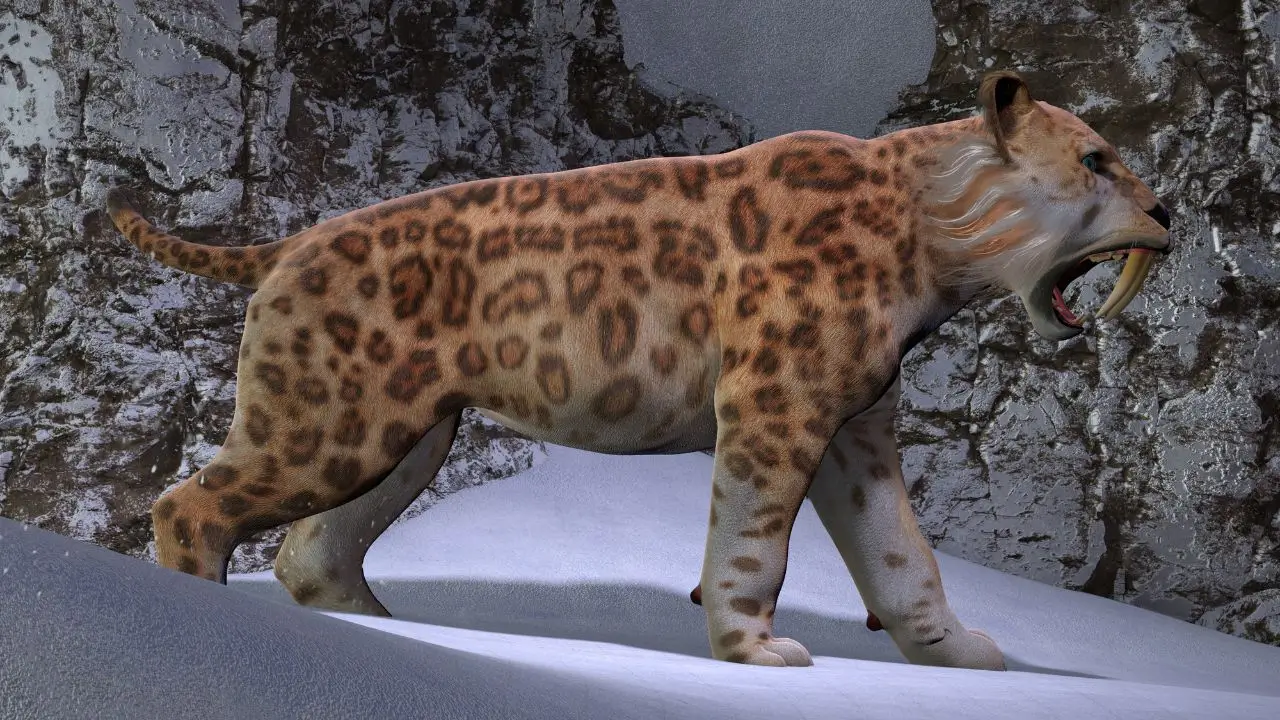
The saber teeth of saber tooth tigers were fragile. But the fossil records show no prominent signs of wear off on their specialized canines. Paleontologists argue that they must have used different techniques than those the present-day big cats use for controlling and killing prey. They proposed many ideas, but it is obvious that saber tooth tigers could not use the simple technique of penetrating their teeth deep into the prey’s neck to control and kill it. Because a very little resistance from the prey could have caused breakage of their fragile canine teeth.
A hypothesis claims that they might have used their canines to cut off blood vessels and nerves in the neck of their prey during the tackle. The most accepted hypothesis states that saber tooth tigers would have totally overcome their prey before the simultaneous cut-off of the blood supply and strangling of the breathing pipe with their canines.
Why Were Saber Tooth Tigers Teeth So Long?
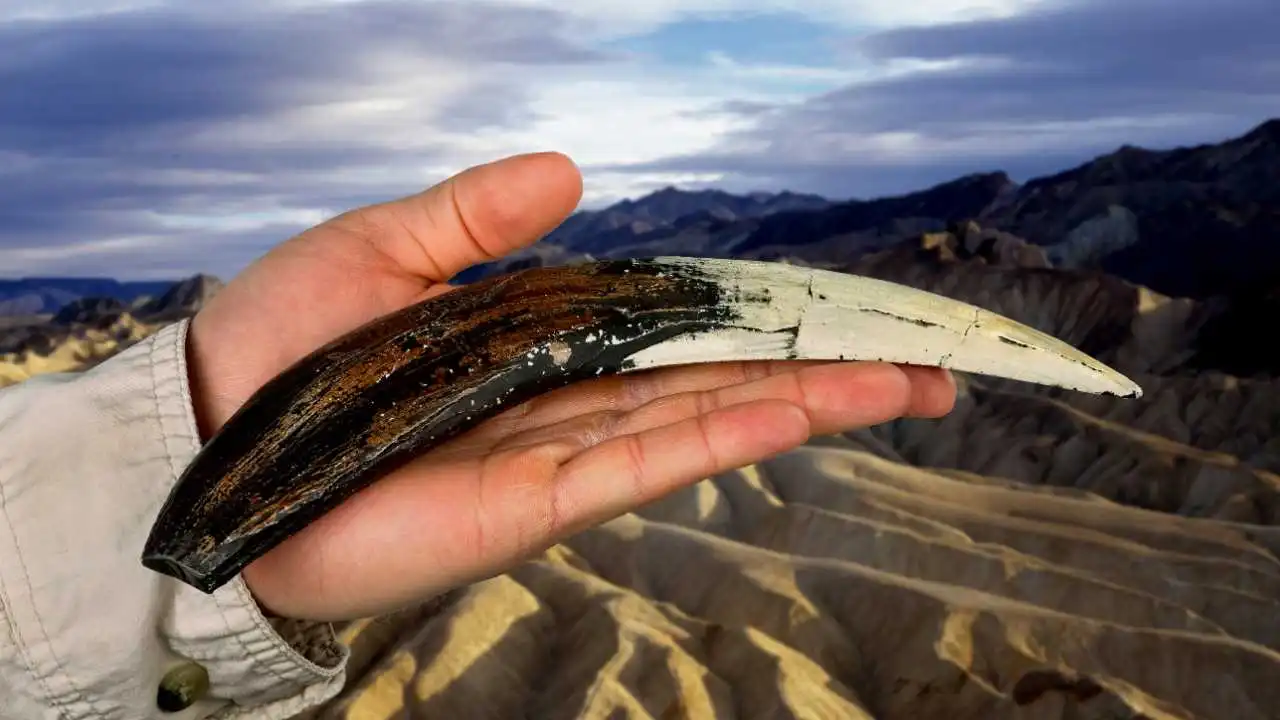
Paleontologists say that saber tooth tigers had a weaker bite force as compared to present-day big cats, like lions, tigers, etc. Therefore, they had long canines used to cut large veins in the neck of the prey and puncture the breathing canal to allow a quick bleed out and death. Their canines acted like the stiletto of an assassin. They used them as a precision weapon to deliver a single, final, and fetal bite to the prey they already subdued with their forelimbs and necks.
How Big Were Saber Tooth Tigers Teeth?
Saber-tooth tigers had long canine teeth with an average length of 7 inches (14 cm). But their length could reach as much as 11 inches (28 cm).
How Sharp Were Saber Tooth Tigers Teeth?
The long canine teeth of saber-toothed tigers were sharp enough to puncture deeply into the flesh of their prey. Their sharp canines would have caused severe wounds in the neck of their prey, and often immediate immobilization and death.
Did Saber Tooth Tigers Have Powerful Bites?
No, saber tooth tigers did not have powerful bites. Their bite force is estimated as only 1,000 Newtons for a 230 kg specimen. Studies of their narrow jaws reveal that they could produce bites only a third as powerful as that of a lion’s bite. They were adapted to be more muscular and robust. They would have to subdue their prey with their powerful forelimbs and necks before delivering a final deadly bite.
Interesting Facts About The Teeth Of Saber-Tooth Tigers
- The well-known elongated canine teeth of saber tooth tigers were fragile and susceptible to breakage and wear if they were used for crushing bones.
- Despite having canines as long as 28 cm, saber tooth tigers would have a weaker bite force, which is estimated as only about 1,000 Newton for a 230 kg specimen. It is only one-third of a 250 kg lion’s bite force, which is estimated as 3,000 Newtons.
- They used their long canines like an assassin’s stiletto to deliver a final fetal wound to the prey they would have already subdued with their powerful necks and forelimbs.
- Studies and computer models reveal that saber tooth tigers and other related species had weak jaw muscles but very strong neck muscles that enabled them to open their mouths wider and penetrate their long teeth deep into the flesh of prey.


